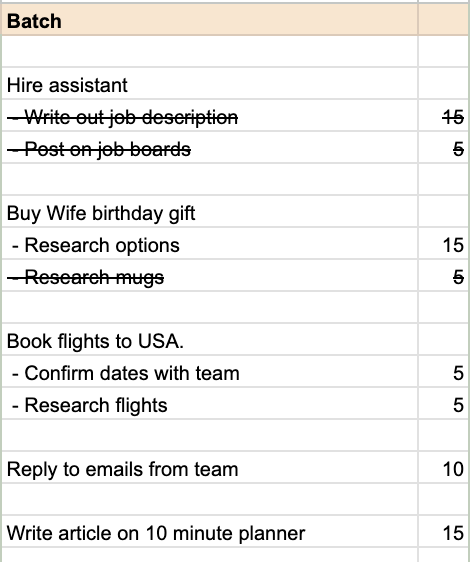I used to suffer from a never ending to-do list. I always felt like I needed to work more in order to get more done. This was at the expense of my life, my family. I never felt satisfied and I always felt like I could and should be achieving more. As a CEO, it came to a point where I had a family holiday and I had to spend 8-10 hours working each day to get the stuff I needed to get done, done.
I know that I have many dream and goals, and I’m so capable. In order to do everything that I wanted to do, I knew that I couldn’t work any harder, there are only 24 hours in a day. And by working harder I would just become tired and less efficient and productivity. I needed to get really really good at time management and productivity. Something about how I use time had to change.
I developed this system for daily planning and time management based on a number of different time management tools together. (Time-boxing, Eisenhower Matrix, Batching Tasks, 80-20 Pareto Principle). I studied what successful people like Elon Musk do to get so much done. This is what I came up, and it’s changed my life. I now get far more done.
This is the system I use for planning my day. I start with a timer for 10 minutes and have to finish within 10 minutes. If it takes any longer than 10 minutes, then I’m trying to do too much.
- Dump – all the things I want to do in the day on a computer list. Thinking about what is the most important thing first.
- Prioritise – put the most important things at the top.
- Break-down – each of those into small chunks of between 5-20 minutes. If there’s anything that is unnecessary I can remove.
- Estimate how long each one will take, and put the amount of time in minutes there. If something looks too big how can I reduce it into a smaller part.
- Batch – try to batch all the similar things tasks together for greater efficiency, trying to keep the most important things first.

Then when you get started on the list you can cross off those that you’ve done. Keeping a timer for each amount of time and then moving on to the next one if its completed earlier or after the time is up.

If you get to the end of the timer and its not finished yet, then move on to the next one. If a task is taking too long, it’s dangerous to get bogged down in a task thats not completed and not completing the other things. You failed in your estimate and thats important to learn from later. Why did you fail? You did also research for 15 minutes which is valuable. You can come back to it later if its really important. Sometimes having fresh eyes can give you valuable insights, and sometimes you will unconsciously be thinking about it when you take a rest and may have a new idea on how to solve it more easily.
Enjoy getting much more done in a day!
